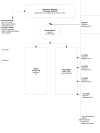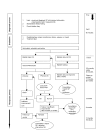The effects of involving a nurse practitioner in primary care for adult patients with urinary incontinence: the PromoCon study (Promoting Continence)
- PMID: 18412964
- PMCID: PMC2386786
- DOI: 10.1186/1472-6963-8-84
The effects of involving a nurse practitioner in primary care for adult patients with urinary incontinence: the PromoCon study (Promoting Continence)
Abstract
Background: Urinary incontinence affects approximately 5% (800.000) of the Dutch population. Guidelines recommend pelvic floor muscle/bladder training for most patients. Unfortunately, general practitioners use this training only incidentally, but prescribe incontinence pads. Over 50% of patients get such pads, costing 160 million euros each year. Due to ageing of the population a further increase of expenses is expected. Several national reports recommend to involve nurse specialists to support general practitioners and improve patient care. The main objective of our study is to investigate the effectiveness and cost-effectiveness of involving nurse specialists in primary care for urinary incontinence. This paper describes the study protocol.
Methods/design: In a pragmatic prospective multi centre two-armed randomized controlled trial in the Netherlands the availability and involvement for the general practitioners of a nurse specialist will be compared with usual care. All consecutive patients consulting their general practitioner within 1 year for urinary incontinence and patients already diagnosed with urinary incontinence are eligible. Included patients will be followed for 12 months. Primary outcome is severity of urinary incontinence (measured with the International Consultation on Incontinence Questionnaire Short Form (ICIQ-UI SF)). Based on ICIQ-UI SF outcome data the number of patients needed to include is 350. For the economic evaluation quality of life and costs will be measured alongside the clinical trial. For the longer term extrapolation of the economic evaluation a Markov modelling approach will be used.
Discussion/conclusion: This is, to our knowledge, the first trial on care for patients with urinary incontinence in primary care that includes a full economic evaluation and cost-effectiveness modelling exercise from the societal perspective. If this intervention proves to be effective and cost-effective, implementation of this intervention is considered and anticipated.
Trial registration: Current Controlled Trials ISRCTN62722772.
Figures


Similar articles
-
Cost-effectiveness of involving nurse specialists for adult patients with urinary incontinence in primary care compared to care-as-usual: an economic evaluation alongside a pragmatic randomized controlled trial.Neurourol Urodyn. 2012 Apr;31(4):526-34. doi: 10.1002/nau.21204. Epub 2012 Jan 24. Neurourol Urodyn. 2012. PMID: 22275126 Clinical Trial.
-
Effectiveness of involving a nurse specialist for patients with urinary incontinence in primary care: results of a pragmatic multicentre randomised controlled trial.Int J Clin Pract. 2011 Jun;65(6):705-12. doi: 10.1111/j.1742-1241.2011.02652.x. Int J Clin Pract. 2011. PMID: 21564445 Clinical Trial.
-
The increasing importance of a continence nurse specialist to improve outcomes and save costs of urinary incontinence care: an analysis of future policy scenarios.BMC Fam Pract. 2018 Feb 17;19(1):31. doi: 10.1186/s12875-018-0714-9. BMC Fam Pract. 2018. PMID: 29454331 Free PMC article.
-
Prevention of urinary and fecal incontinence in adults.Evid Rep Technol Assess (Full Rep). 2007 Dec;(161):1-379. Evid Rep Technol Assess (Full Rep). 2007. PMID: 18457475 Free PMC article. Review.
-
Economic evaluation of nurse practitioner and clinical nurse specialist roles: A methodological review.Int J Nurs Stud. 2017 Jul;72:71-82. doi: 10.1016/j.ijnurstu.2017.04.012. Epub 2017 May 4. Int J Nurs Stud. 2017. PMID: 28500955 Review.
Cited by
-
Internet-based treatment of stress urinary incontinence: a randomised controlled study with focus on pelvic floor muscle training.BJU Int. 2013 Aug;112(3):362-72. doi: 10.1111/j.1464-410X.2012.11713.x. Epub 2013 Jan 25. BJU Int. 2013. PMID: 23350826 Free PMC article. Clinical Trial.
-
Pelvic floor muscle training versus no treatment, or inactive control treatments, for urinary incontinence in women.Cochrane Database Syst Rev. 2018 Oct 4;10(10):CD005654. doi: 10.1002/14651858.CD005654.pub4. Cochrane Database Syst Rev. 2018. PMID: 30288727 Free PMC article.
-
Nurses and Physicians' Perceptions Regarding the Role of Oncology Clinical Nurse Specialists in an Exploratory Qualitative Study.Healthcare (Basel). 2023 Jun 22;11(13):1831. doi: 10.3390/healthcare11131831. Healthcare (Basel). 2023. PMID: 37444665 Free PMC article.
-
Developing an internationally-applicable service specification for continence care: systematic review, evidence synthesis and expert consensus.PLoS One. 2014 Aug 14;9(8):e104129. doi: 10.1371/journal.pone.0104129. eCollection 2014. PLoS One. 2014. PMID: 25121511 Free PMC article.
-
Fuzzy cognitive map in differential diagnosis of alterations in urinary elimination: a nursing approach.Int J Med Inform. 2013 Mar;82(3):201-8. doi: 10.1016/j.ijmedinf.2012.05.012. Epub 2012 Jun 27. Int J Med Inform. 2013. PMID: 22743142 Free PMC article.
References
-
- GIP/Health Insurance Board Total cost 2002-2006. 2007.
-
- Abrams P, Cardozo L, Khoury S, Wein A. Incontinence. 3rd International Consultation on Incontinence. 1&2. Monaco, Health Publication Ltd; 2005.
-
- Health Council of the Netherlands . Urinary Incontinence. The Hague, Health Council of the Netherlands; 2001.
Publication types
MeSH terms
Associated data
LinkOut - more resources
Full Text Sources
Medical

